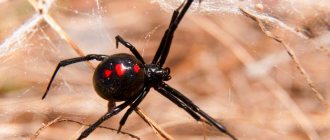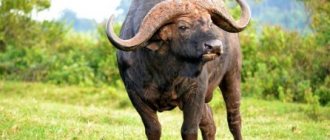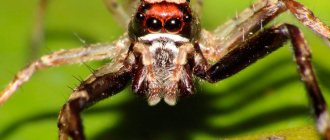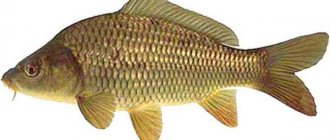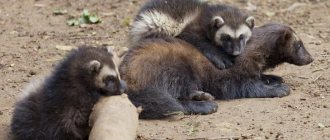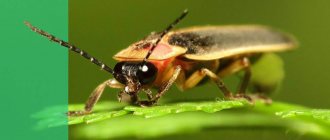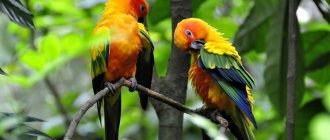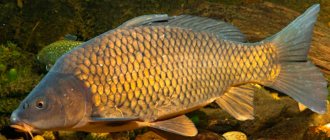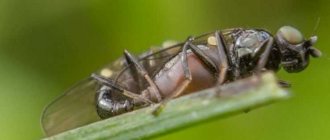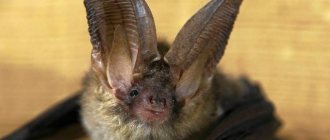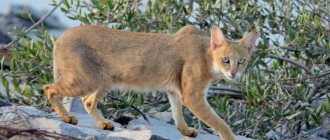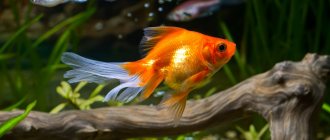The tsetse fly (a representative of the family GLOSSINIDAE) is an insect that poses a danger to humans. The fly lives in the tropics and subtropics of the African continent. About fifty thousand people die every year due to insect bites. She is called the "silent killer." There are 23 species of such insects, and 6 species of flies are carriers of a disease called sleeping parasites that transmit parasites to humans.
Appearance
The tsetse fly has a body length of 10-14 millimeters and can be divided into three components: head, chest, abdomen. Dark brown large eyes are located on the head. The chest consists of three fused segments. Wings are attached to the chest part and six legs extend from it. The body is gray-red in color, with 4 brown stripes running along the back. The fly has a wide but short belly. Characteristic features of the tsetse:
- long and hard trunk, looking forward;
- stacked together overlapping wings and veins with axe-like outlines;
- antennae with forked ends.
The fly's mouth is designed like this: the lower lip has a pointed tongue, and the upper lip has an elongated shape. Having pierced the skin of the victim with its trunk, the tsetse injects its saliva, which introduces infection. The fly drinks an amount of blood corresponding to its mass. In the belly of the female there is a large uterus in which the larvae are located.
Classification
The genus includes from 22 to 31 species, which are grouped into three subgenera:
- Austenina Towensend, 1921 Glossin (Austenina) brevipalpis Newstead, 1910
- Glossin (Ostenin) Fresili Guto, 1987
- Glossin (Austenina) fusca (Walker, 1849)
- Glossin (Austenina) fuscipleuralis Austen, 1911
- Glossin (Austenin) haningtoni Newstead & Evans, 1922
- Glossin (Austenin) nigrofusca Newstead, 1910
- Glossina (Austenina) longipennis Corti, 1895
- Glossin (Austenina) Medorum Austin, 1911
- Glossin (Ostenin) our Potts, 1955
- Glossin (Austenin) schwetzi Newstead & Evans, 1921
- Glossina (Austenina) tabaniformis Westwood, 1851
- Glossin (Ostenin) Severini Newstead, 1913
- Glossin (Austin) Vanhoofi Henrard, 1952
- Glossina (Glossina) austeni Newstead, 1912
- Glossina (Nemorphina) Caliginea Austin, 1911
Where does it live?
Tsetse settled in the countries of the African continent located in the territories south of the Sahara Desert. It is common:
- in Kenya;
- in Nigeria;
- in Uganda;
- in Cameroon;
- in Gabon, etc.
The tsetse fly's range includes thirty-seven countries. The insect prevents African inhabitants from developing fertile lands. Scientists are looking for methods to destroy tsetse.
The fly began to spread across African territory at the end of the 19th century, when the plague disease was brought to the continent from European countries. This contributed to the destruction of local residents and animals. Abandoned fields and thickets created favorable conditions for the spread of tsetse flies, which destroyed the lives of millions of Africans.
Fighting methods
Although tsetse are beneficial to the ecosystem, the threat they pose to animals and people has forced humanity to wage a continuous battle against these insects.
At the beginning of the last century, as livestock numbers sharply declined due to African plague, the number of cases of sleeping sickness also decreased. This led to the selection of hundreds of thousands of wild ungulates, lions and elephants, as it led to the assumption that the fly only drinks the blood of large animals. However, the mass extermination did not reduce the population of the deadly insects - it was later discovered that tsetse flies can also feed on the blood of small rodents, birds and lizards.
When it became clear that there were many more flies in forest areas, people began to actively cut down trees and bushes. When they discovered that this method also failed (and also caused enormous environmental damage), Africans turned to milder measures such as building insecticide traps.
Deforestation is a drastic measure and is far from effective against dangerous creatures, in this case the tsetse fly.
A very original method of tsetse management was invented on the islands of the Zanzibar archipelago. Scientists artificially bred several million flies, then separated the males from the females and sterilized the former by irradiating them with low doses of radiation. When the males were released, they mated with females that were thought to be fertilized but subsequently failed to produce offspring.
Currently, this method is the most effective - with its help, scientists expect to completely destroy the Glyantsev family in the next 30 years.
Lifestyle
Its behavior depends on the type of tsetse fly:
- A tsetse species called Glossina palpalis lives in shrubs and grass near ponds. They pose a danger to people and reptiles.
- In tropical forest zones, where there is high humidity and moderate temperatures, the flies Glossina fusca have settled. This type of fly does not attack humans.
- The flies Glossina morsitans live in the South African savannah zone. They attack people and animals.
The life of a fly lasts six to seven months. They prefer a humid environment. During the dry season, insects move to bodies of water and hide from the heat under plants. At such times they sit and do not want to fly. Food comes to them on its own. In hot weather, animals go to ponds to quench their thirst.
For the tsetse fly, the zebra is of no interest because the black and white stripes on its skin are not perceived by its vision as a living creature. They flash before the eyes of a fly without attracting its attention.
Tsetse is well adapted to dark colors: it attacks people with black skin and animals with dark skin. The tsetse fly is tenacious, flies silently and at high speed.
Treatment
The type of treatment depends on the form and stage of the disease. Early detection of the disease increases the chances of successful treatment. Because the parasite can remain viable for a long time and cause relapses many months after the end of therapy, patients should remain under observation for up to 24 months to evaluate the results of treatment, during which clinical examination of patients and laboratory tests should be performed. examination of bodily fluids, including, in some cases, cerebrospinal fluid obtained by lumbar puncture.
To successfully treat the disease at the second stage, it is necessary to use drugs that can overcome the blood-brain barrier and neutralize the parasite in the central nervous system.
In 2022, WHO published new guidelines for the treatment of the Gambian form of human African trypanosomiasis. A total of six drugs are registered for the treatment of sleeping sickness. These drugs are provided to WHO by manufacturers free of charge and supplied free of charge to endemic countries.
Drugs for the treatment of the disease at the first stage:
- Pentamidine: first developed in 1940, used to treat sleeping sickness caused by Tb gambiense in the first stage. Despite the presence of serious side effects, the drug is generally well tolerated.
- Suramin: first obtained in 1920, used to treat Tb rhodesiense disease in the first stage. The drug has a number of undesirable side effects, including nephrotoxicity and allergic reactions.
Drugs for the treatment of the disease in the second stage:
- Melarsoprol: first introduced in 1949, used to treat infections caused by both pathogens. It is an arsenic derivative and causes numerous unwanted side effects, the most severe of which is reactive encephalopathy (encephalopathic syndrome), which can be fatal (in 3%–10% of cases). It is currently recommended as a first-line treatment for the Rhodesian form of the disease, but is rarely prescribed for the Gambian form of infection.
- Eflornithine: registered in 1990, much less toxic than melasoprol, effective only against Tb gambiense. It is usually used in combination with nifurtimox (as part of combination nifurtimox-eflornithine therapy), although it can also be used as monotherapy. The treatment regimen is complex and inconvenient.
- Nifurtimox: Nifurtimox-eflornithine combination therapy was proposed in 2009. It simplifies the use of eflornithine by reducing the duration of treatment and the number of intravenous perfusions, but unfortunately its effectiveness against Tb rhodesiense has not yet been studied. Nifurtimox is registered for the treatment of American but not African human trypanosomiasis. WHO supplies both drugs to endemic countries free of charge, complete with all consumables necessary for their use.
Drugs to treat the disease at both stages:
Fexinidazole is an oral drug for the treatment of the Gambian form of human African trypanosomiasis. In 2022, the drug was included in the WHO List of Essential Medicines and recommended in WHO guidelines for the treatment of human African trypanomosis. The drug is indicated as first-line therapy in the first and mild second stages of the disease. Treatment should be carried out under the supervision of qualified medical personnel; The drug is taken 30 minutes after eating solid food. Clinical trials of this drug are currently underway for the treatment of the Rhodesian form of trepanosomiasis.
Nutrition
The tsetse fly eats only the blood of warm-blooded artiodactyls and humans. Almost every day they suck it. Flies show different activity: some species fly in the morning, other species fly in the afternoon. In the forests they land on people. Female flies drink blood from large animals, piercing their skin and injecting saliva into their body. To get into a blood vessel, flies use small sharp teeth located at the end of the trunk. The teeth bite through the skin and elastic vascular wall. By injecting saliva into the vessel, containing trace elements that interfere with clotting, the tsetse drinks blood. Her thin belly inflates, taking on a streamlined shape.
The tsetse fly feeds on blood:
- antelope;
- buffalo;
- hare;
- monitor lizard;
- crocodile;
- birds;
- person.
The fly has a large enough belly that it can withstand swelling when sucking out blood fluid.
First aid
Multiple injuries are the most painful: if the legs, arms, stomach and other parts of the body are bitten by a fly, inflammation develops. The bite causes swelling of the soft tissues and can worsen overall health. Wounds are treated with an antiseptic - green, alcohol, iodine.
What is the best way to treat child bites? In this case, non-alcoholic products can help - chlorhexidine, hydrogen peroxide. In addition, soothing and cooling ointments help with a bite, which reduces the occurrence of local reactions. To prevent fly bites from causing allergies in children, Zodak drops or Diazolin for children are given.
Reproduction
Tsetse is a viviparous species of insect, since the embryo initially develops in the uterus of the female. During its life cycle, a tsetse reproduces from 8 to 10 offspring. Mating in a female occurs once. After about 8-9 days, a fertilized egg appears. The larva lives in the uterus of the female, where it grows due to maternal nutrients.
The tsetse fly must take blood three times for the larva to develop normally. If the female fails to eat, the larval embryo dies.
With normal development of the larva, after a nine-day period, it transforms into a pupa, burrowing into a layer of earth. Then the hard outer film of the puparia develops. The pupa develops in three weeks. It has a hard shell with an oblong shape. It contains dark petals with a breathing tail. The pupa is less than one centimeter long.
A fly forms from the shell within a month. After two weeks, the fly can already mate and begins to lay larvae. The period between the birth of a female and her reproduction of the first larva is fifty days. Throughout her life, every nine days, the female tsetse produces a larva.
How do tsetse flies reproduce?
Insects mate only once. After fertilization, females do not lay eggs, as many insects do, but carry them in a special sac in the abdomen. The larvae develop one at a time. In total, the female brings about 8-10 larvae during her life.
While the larvae are in the body of the fly, they feed on the secretions of a special gland. The development of the offspring in the female's body takes about 1-2 weeks, then they are born. The larvae do not live long outside the mother's body, since they are born already at the last stage of the larval life cycle.
A few hours after hatching, the larva burrows into the soil to a depth of 2-3 cm and turns into a pupa. The body of the pupa is dark brown or black, its length is 1 cm. The larva remains in this phase for about 3-4 weeks.
Due to the nutritional value of the blood, the larva and pupa do not need additional food. They develop using reserves made at the imago stage.
Natural enemies
The tsetse fly has no enemies in the natural environment. There are small birds in Africa that sometimes eat these flies, but only when they come across them. The main enemy of the fly is man. When a fly is born, it does not have any viruses. She becomes infected by drinking blood from animals that are infected.
People develop and use a variety of methods to destroy flies that are dangerous to health:
- Destruction of all livestock and burning of land. The flies disappeared for a short period of time. But after a while they appeared, as they drank the blood of reptiles and rodents.
- Location of traps near settlements and agricultural land. A dark cloth or animal skin is taken and impregnated with insecticides. Flies are attracted to artificially created odors. The population is decreasing.
- Applying pesticides to animal hides or spraying them using aircraft. No particular effect was observed.
- Deforestation to eliminate the habitual living conditions of the tsetse. There was no result.
- Use of radioactive radiation. It deprives males of the function of reproducing offspring. Males who have received a dose of radiation are distributed to where the females are. Reproduction does not occur during mating, since the eggs are not fertilized.
This method leads to a temporary reduction in the reproduction of insects, because there is no barrier of water between territories and unirradiated males again end up in a certain area, then the flies reproduce again. Today this method is the most effective. Scientists believe that radiation will help eliminate deadly insects, but this will take time: about twenty years.
Disease management: making a diagnosis
Disease management is carried out in three stages:
- Screening for possible infection. This includes serological testing (only available for Tb gambiense) and testing for clinical signs, particularly enlarged cervical lymph nodes.
- Search for parasites in biological fluids.
- Determining the stage of the disease. This involves a clinical examination of the patient and, in some cases, examination of cerebrospinal fluid obtained by lumbar puncture.
To avoid the need for complex and difficult treatment methods, diagnosis should be performed as early as possible before the development of the neurological stage of the disease.
Due to the long and asymptomatic course of the first stage of sleeping sickness caused by T. b. gambiense, careful and active screening of risk groups is recommended in order to identify patients at an early stage of the disease and limit further spread of infection through their treatment, after which they cease to act as a reservoir. Comprehensive population screening requires significant financial investment in human and material resources. In Africa, especially in remote areas where the disease is most prevalent, these resources are often in short supply. As a result, some infected people die before being diagnosed and receiving treatment.
Population
The tsetse fly is distributed over a vast area - ten million square kilometers. These lands are fertile, but they are not cultivated or used for pasture. There is no development in the countries where the tsetse fly lives, and they are very poor. Animal husbandry and crop production do not develop there.
Tsetse infect humans with a disease called African trypanosomiasis. Surveillance is carried out on approximately four million people from fly zones that contain 70 million Africans.
People have been fighting tsetse flies for several decades. This led to a decrease in the natural population. The destruction of limited populations of tsetse flies is facilitated by the method of radiation of males and their spread throughout contaminated areas.
Scientists believe that a decline in the tsetse population does not harm the ecosystem at all. The implementation of insect control devastates regions and they become lifeless. The fly destroys the population, causes them to starve and harms the economies of African countries.
Public-private partnerships
In 2000 and 2001 WHO established a public-private partnership with Aventis Pharma (now Sanofi) and Bayer HealthCare, resulting in a WHO-led disease surveillance and control program that provides control support to endemic countries at no cost to medicines are supplied.
The partnership has been renewed several times in 2006, 2011, 2016 and 2021. Progress in reducing the incidence of sleeping sickness and the prospect of its elimination has prompted a number of other private sector partners to support the WHO initiative to eliminate the disease as a public health problem and ensure the elimination of transmission by 2030 G.
Virus transmission
When sucking blood from people and animals, tsetse flies introduce single-celled trypanosome parasites into the body. They cause a dangerous, fatal disease called trypanosomiasis.
A parasite that enters the human circulatory system completely destroys the immune system, and then all nerve cells. First, inflammation of the lymph nodes begins, tumors appear on the throat, then painful tumors completely cover the body. A person develops a fever, headaches, a state of drowsiness, apathy, weakness, and loss of appetite. Trypanosomes, once in the human body, are able to change protein shells, resulting in several thousand forms. Therefore, they pose a mortal danger and one drug is not enough for treatment.
Trypanosomes, which are fatal to humans, are found in the circulatory system of antelopes living in African territories. They do not harm antelopes. The parasitic trypanosome is transmitted from antelope to humans or domestic animals through the bites of tsetse flies. Trypanosome, having penetrated the blood, begins to change the shell of its protein.
During tourist trips to countries located in the equatorial belt, you need to take precautions. Be sure to get vaccinated to prevent infection with trypanosomes.
These single-celled parasites cause the following dangerous diseases:
- Rhodesian sleeping sickness. Its symptoms appear a week after infection. If treatment is not started in a timely manner, death occurs. The first sign: the appearance of an ulcer on any limb, similar to a boil. After two or three weeks it heals, but the scar remains. Then fever begins, pain in the head and joints occurs, spots appear on the skin, and sleep is disturbed.
- Gambian sleeping sickness. The symptoms are exactly the same as the previous disease; it develops much more slowly, four to five months. This disease affects humans and monkeys.
- Invasive disease (nagana) in animals. They develop swelling, fever, and mucus from the eyes and nose. This disease infects all animals except goats and mules (they are immune to the parasite). When animals get sick, farmers face big losses.
Animal trypanosomiasis
Other species and subspecies of parasites of the genus Trypanosoma are pathogenic for animals and cause trypanosomiasis in some species of wild and domestic animals. Trypanosomiasis in cattle is called Nagana. Trypanosomiasis in domestic animals, especially cattle, seriously undermines the economic development of infected rural areas.
Animals can harbor parasites pathogenic to humans, especially Tb rhodesiense, with domestic and wild animals being important reservoirs for the latter. Animals can also be infected with Tb gambiense and may also act as reservoirs, although to a lesser extent. However, the actual role of the animal reservoir in the epidemiology of the Gambian form of the disease is still not well understood.
Interesting Facts
- Tsetse flies have lived on Earth for thirty-four million years.
- Male tsetse flies usually attack people, while females love the blood of large animals.
- Female tsetse flies can reproduce four generations in one year, and thirty-one generations of flies over the entire period of their lives.
- Tsetse fly larvae are capable of secreting a very strong toxic substance. One drop of this substance is lethal to humans.
- Every year, approximately three million different animals and three hundred thousand people die from tsetse fly bites.
- “Tsetse” is a name that sounds unusual for many peoples of the globe, but it turns out that when translated from the language of the African population, this word means “killer of an animal.”
- When a tsetse attacks prey, it seeks to feed on blood. If it is nailed, stunned, or its wings are damaged, the fly will use its last strength to get close to its intended victim and even suck the blood out of it as it dies.
- In the perception of programmers, a tsetse fly is a problem associated with a hard drive failure. The inscription that displays the error code contains two English letters SS. Such a hard drive failure can be very dangerous for a computer, almost fatal, similar to a tsetse bite. Therefore, to eliminate this problem, you need to turn to professional programmers.
- The tsetse fly can attack warm objects that move. Sometimes they fall on a moving car that is heated by the engine and sunlight. If a person gets out of the car, the fly will first land on the warm body of the car, and not on him.
Life cycle
Tsetse has an unusual method of reproduction associated with abundant food supply. Technically, it goes through all the standard stages of insect development:
- egg;
- 3 larval stages;
- cocoon;
- Imago.
Life cycle of the tsetse fly
But only the latter can be seen. Until the last larval stage, the fly develops inside the female. During intrauterine development, the larva feeds on a milk analogue, which is secreted by a modified gland in the uterus. At the third stage, the larva leaves the female and immediately burrows into moist soil. It pupates in the soil.
The development of dolls lasts 20-30 days. The adult emerges from the cocoon and immediately flies off in search of a mate and food.
Interesting!
In Tsetse, both sexes drink blood.
Flies live for several years. The female fly only lays one larva at a time. In a year, he can lay only 4-6 offspring. But over the course of her entire life, the number of larvae reaches 31. A woman needs protein-rich, high-calorie food to live and feed her offspring. The tsetse belly is designed in such a way that a woman can drink as much blood as she weighs at one time.
